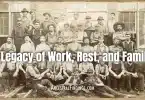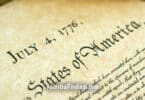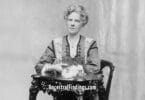The year was 1861, and the United States was teetering on the brink of a civil war. Amidst rising tensions and growing sectional divides, a last-ditch effort for peace was made through the Washington Peace Conference. This gathering of delegates from various states convened in the nation’s capital, representing a poignant moment in American history where the hope for reconciliation and unity flickered briefly before being extinguished by the fires of conflict.
The Prelude to the Conference
The roots of the Washington Peace Conference lay deep within the fractious political climate of the late 1850s and early 1860s. The election of Abraham Lincoln in November 1860 had been a tipping point. Lincoln’s victory, representing the anti-slavery Republican Party, alarmed the Southern states, which viewed his presidency as a direct threat to the institution of slavery and their way of life. The Southern states began to secede from the Union, with South Carolina leading the way in December 1860, followed by several others.
As secession fever swept through the South, there was a clamor for compromise and dialogue from various quarters in the North. Many believed that the Union could still be preserved through negotiation and concession. It was in this atmosphere of desperation and hope that the Washington Peace Conference was conceived.
The Convening of the Conference
On February 4, 1861, delegates from twenty-one states gathered at the Willard Hotel in Washington, D.C. Virginia, one of the border states caught between North and South, initiated the conference, hoping to mediate a peaceful resolution. Former President John Tyler, a Virginian, was chosen to preside over the conference.
The delegates represented various political views and included prominent figures such as Salmon P. Chase of Ohio, a future Chief Justice of the Supreme Court, and David Dudley Field of New York, a leading legal reformer. Their mission was to propose amendments to the Constitution that would address the grievances of the Southern states and provide a framework for reconciliation.
Proposals and Debates
The key proposals discussed during the conference revolved around the contentious issue of slavery. Several amendments were proposed, the most notable being an extension of the Missouri Compromise line (latitude 36°30′) to the Pacific Ocean, allowing slavery in all territories south of this line. Another significant proposal was a constitutional amendment that would protect slavery in states where it already existed, effectively making it immune to federal interference.
The debates were intense and often heated. Northern delegates were generally opposed to any extension of slavery, while Southern representatives were insistent on their right to expand the institution into new territories. Despite the earnest efforts of many participants, there was a deep-seated mistrust and fundamental disagreement that proved insurmountable.
The Outcome
After nearly three weeks of deliberation, the Washington Peace Conference concluded on February 27, 1861. The final recommendations included a series of proposed constitutional amendments to appease the South. These recommendations were submitted to Congress, but they had little impact. The proposals were largely ignored, overshadowed by the rapidly escalating crisis.
The conference’s failure underscored the deep divisions within the country. While it was a noble attempt at preserving the Union through dialogue and compromise, the intractable nature of the conflict over slavery and states’ rights meant that peaceful resolution was unattainable.
Reflections on the Conference
The Washington Peace Conference is often considered a poignant, if futile, effort to stave off civil war. It represents a critical moment where Americans from different regions and political backgrounds came together in a genuine, unsuccessful attempt to bridge their differences.
From a genealogical perspective, the conference is significant because it involved individuals who played pivotal roles in their communities and states. Their participation in this event reflected the broader sentiments and struggles of the era. For those researching family histories from this period, understanding the Washington Peace Conference provides valuable context about the political and social climate that influenced the lives of their ancestors.
Personal Stories and Legacies
One of the compelling aspects of genealogical research is uncovering the personal stories behind historical events. Among the delegates were men whose lives and decisions impacted future generations. For instance, John Tyler, who presided over the conference, had a family legacy intertwined with the nation’s history. His grandsons would later reflect on his efforts as a testament to his dedication to the Union and a symbol of the complexities of loyalty and division within American families.
Salmon P. Chase, another delegate, left a legacy through his political and judicial career and his descendants, who would continue to shape American society. Tracing the lineage and contributions of these individuals offers a rich personal and national history.
The Lasting Impact
Though the Washington Peace Conference did not achieve its goal of preventing civil war, it remains a significant chapter in American history. It reminds us of the profound challenges of achieving compromise in the face of deeply held convictions and conflicting interests. The conference provides a snapshot of the nation at a critical juncture for genealogists, revealing the complexities and human dimensions of historical events.
Ultimately, the failure of the Washington Peace Conference underscored the inevitability of the Civil War, a conflict that would reshape the nation and profoundly impact the lives of countless families. As we delve into our genealogical past, understanding such events helps us appreciate the struggles and aspirations of our ancestors, who lived through times of great uncertainty and change.
By exploring the Washington Peace Conference, we gain insights into the efforts to preserve the Union and why those efforts ultimately fell short. It is a story of hope, conflict, and the enduring quest for peace—a narrative that resonates through the annals of American history and our own family stories.
Here are a few recommended books that cover the Washington Peace Conference and related historical contexts:
“A Shattered Peace: Versailles 1919 and the Price We Pay Today” by David A. Andelman – This book explores the consequences of the decisions made at the Paris Peace Conference, which was influenced by earlier peace efforts, including the Washington Peace Conference.
“Paris 1919: Six Months That Changed the World” by Margaret MacMillan – Although focused on the Paris Peace Conference, this book provides valuable context on the diplomatic atmosphere of the time, which would include the events and negotiations surrounding the Washington Peace Conference.
“The Peace Puzzle: America’s Quest for Arab-Israeli Peace, 1989-2011” by Daniel Kurtzer, Scott Lasensky, William Quandt, Steven Spiegel, and Shibley Telhami – This book offers insight into the broader history of American diplomacy and peace efforts, including the Washington Peace Conference’s influence on later negotiations.
“The End of World War I: The Treaty of Versailles and Its Tragic Legacy” by Alan Swayze – This book examines the Treaty of Versailles and its connections to earlier peace efforts, including the Washington Peace Conference.






